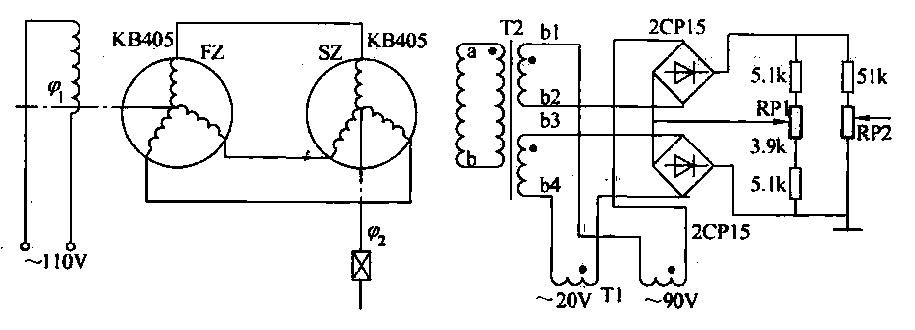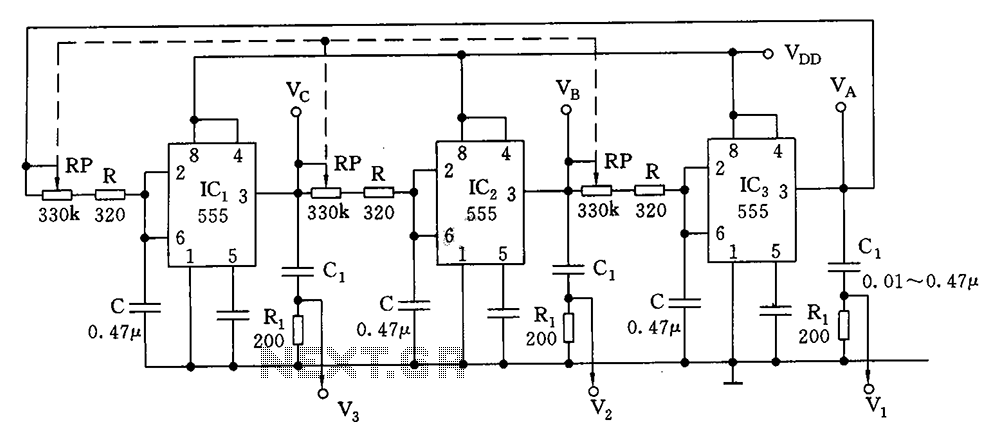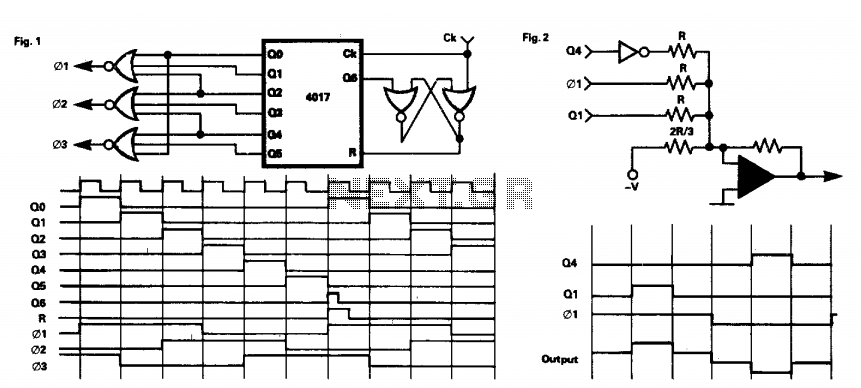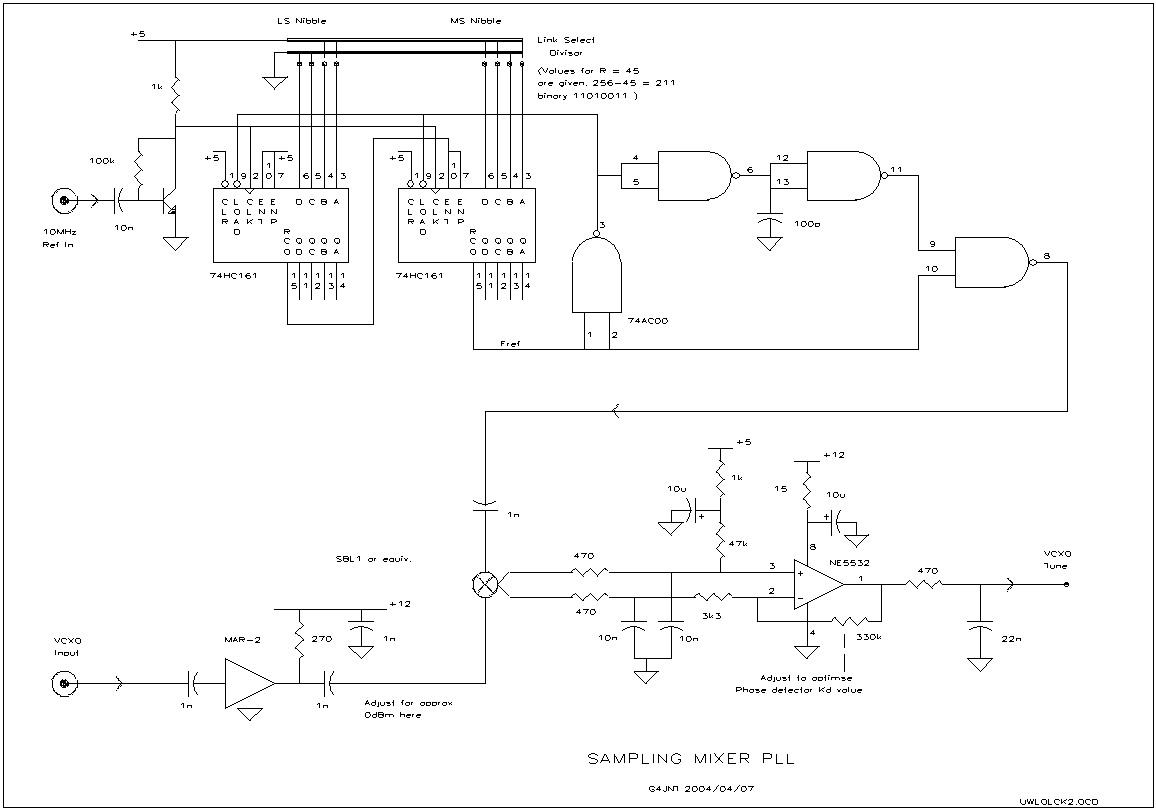
Phase demodulation
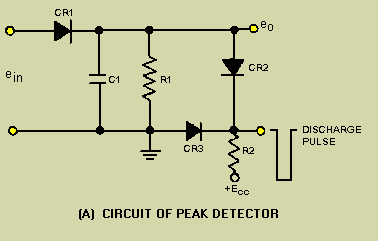
The quadrature-grid signal is driven by a reference from the transmitter. This reference may consist of a sample of the unmodulated master oscillator, which provides a phase reference for the detector. The modulated waveform is applied to the limiter grid. Gating action in the tube occurs as the phase shifts between the input waveform and the reference. The combined output current from the gated-beam tube generates a series of current pulses. The width of these pulses varies according to the phase difference between the carrier and the modulated wave.
In the described electronic circuit, the quadrature-grid signal plays a crucial role in phase detection and modulation processes. The reference signal, typically sourced from an unmodulated master oscillator, serves as a stable phase reference for the detection system. This configuration is essential in applications such as phase-locked loops and demodulation systems where precise phase relationships are critical.
The limiter grid receives the modulated waveform, which is subjected to gating action within the tube. This gating action is a result of the phase relationship between the incoming modulated signal and the reference signal. As the phase shifts, the gated-beam tube selectively allows current to pass, resulting in the output of current pulses. The characteristics of these pulses, particularly their width, are directly influenced by the phase difference between the carrier wave and the modulated waveform.
The output current pulses can be analyzed to extract information about the modulated signal, making this system particularly useful in communication systems where phase modulation is employed. The varying pulse widths can be visualized in a graphical representation, such as figure 3-20, which illustrates how the pulse width changes in response to different phase relationships. This behavior is critical for ensuring accurate signal interpretation and maintaining the integrity of the transmitted information.
In summary, the interaction between the quadrature-grid signal, the reference oscillator, and the modulated waveform is fundamental to the operation of the gated-beam tube, facilitating effective modulation and demodulation processes in electronic communication systems.The quadrature-grid signal is excited by a reference from the transmitter. This may be a sample of the unmodulated master oscillator providing a phase reference for the detector. The modulated waveform is applied to the limiter grid. Gating action in the tube will occur as the phase shifts between the input waveform and the reference. The combined output current from the gated-beam tube will be a series of current pulses. These pulses will vary in width as shown in figure 3-20. The width of these pulses will vary in accordance with the phase difference between the carrier and the modulated wave.
🔗 External reference
In the described electronic circuit, the quadrature-grid signal plays a crucial role in phase detection and modulation processes. The reference signal, typically sourced from an unmodulated master oscillator, serves as a stable phase reference for the detection system. This configuration is essential in applications such as phase-locked loops and demodulation systems where precise phase relationships are critical.
The limiter grid receives the modulated waveform, which is subjected to gating action within the tube. This gating action is a result of the phase relationship between the incoming modulated signal and the reference signal. As the phase shifts, the gated-beam tube selectively allows current to pass, resulting in the output of current pulses. The characteristics of these pulses, particularly their width, are directly influenced by the phase difference between the carrier wave and the modulated waveform.
The output current pulses can be analyzed to extract information about the modulated signal, making this system particularly useful in communication systems where phase modulation is employed. The varying pulse widths can be visualized in a graphical representation, such as figure 3-20, which illustrates how the pulse width changes in response to different phase relationships. This behavior is critical for ensuring accurate signal interpretation and maintaining the integrity of the transmitted information.
In summary, the interaction between the quadrature-grid signal, the reference oscillator, and the modulated waveform is fundamental to the operation of the gated-beam tube, facilitating effective modulation and demodulation processes in electronic communication systems.The quadrature-grid signal is excited by a reference from the transmitter. This may be a sample of the unmodulated master oscillator providing a phase reference for the detector. The modulated waveform is applied to the limiter grid. Gating action in the tube will occur as the phase shifts between the input waveform and the reference. The combined output current from the gated-beam tube will be a series of current pulses. These pulses will vary in width as shown in figure 3-20. The width of these pulses will vary in accordance with the phase difference between the carrier and the modulated wave.
🔗 External reference
